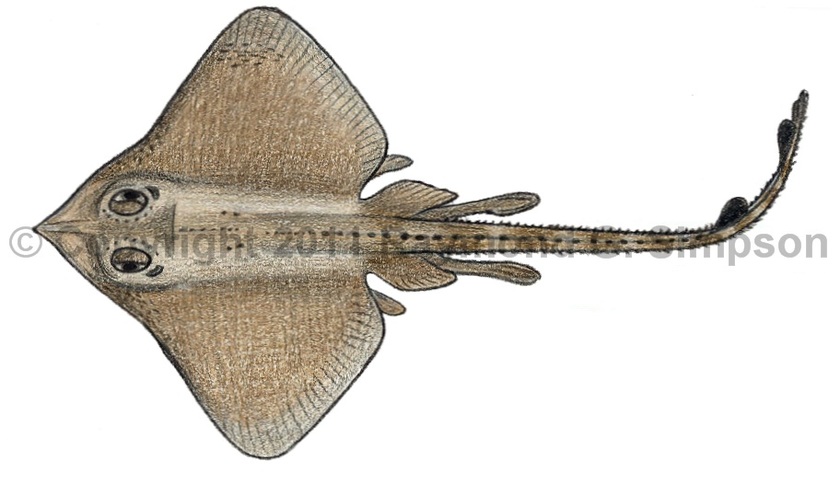
Common Name
Atlantic Legskate
Year Described
Bigelow & Schroeder, 1948
Identification
Disk rhomboidal with a slightly concave anterior margin of snout and pectoral fin. Snout moderate (12% TL) with stiff rostral cartilage. Pectoral fins with blunt tips. Anterior pelvic fin lobe separated from posterior lobe and greatly elongated; about as long as the squared-off posterior lobe. Tail is long and thin. Posterior part of tail with skin folds that broaden toward tip. There are two dorsal fins placed far back on tail with fins separated by over twice dorsal width. Caudal fin is barely evident and tapers to a round tip. Eyes and mouth large. Jaws with 40-42 tooth rows. Male claspers thin and long.
Body is covered with dermal denticles dorsally. The rostrum has 2-3 thorns. There are 11-12 orbital thorns, and 1-3 nuchal thorns on the head. There are 2-4 scapular thorns. Posterior abdomen and tail without a strong row of median thorns but multiple rows of weak lateral thorns (gap on abdomen). Thorn rows on posterior tail more sparse. There are several small thorns present between the dorsal fins. Ventral surface without dermal denticles except for under tail.
Color
Dorsum pale brown with no spots or markings. Tail with two dark brown bands corresponding to the dorsal fins. Ventrum pale with a few dusky brown blotches.
Size
Maximum size to 34cm TL.
Habitat
A deepwater skate occurring on continental slopes from 510-860m.
Range
Known from off Florida to Cuba and the Bahamas.
References
Last, P.R., White, W.T., Carvalho, M.R. de, Séret, B., Stehmann, M.F.W & Naylor, G.J.P (Eds.). 2016. Rays of the World. CSIRO Publishing, Melbourne.
Other Notes
The distance between the dorsal fins in this species makes it distinct from all the other Cruriraja species.